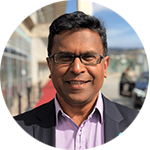Powering the next chapter of mobile growth

Australia’s mobile landscape is in a state of continual transformation. And Telstra is making bold investments to help shape its future. With unabated demand for mobile data, our latest advancements are focused on expanding coverage, strengthening resilience, unlocking next-generation features, and enabling a richer ecosystem of applications and services for our partners.
The continued rise of mobile data
It’s no secret Australians are using more mobile data than ever. We see an astonishing 8.9 petabytes of data pass through our mobile network every day. That’s the equivalent of 300 years of high-definition video streaming every single day. Over the past five years, demand for mobile data on our network has tripled. At the same time, customer needs for technology and connectivity are becoming more sophisticated.
Keeping up with this demand requires constant investment to maintain network performance. In February 2025, we announced an additional $800 million investment to extend our leadership and deliver customers the most advanced, resilient and reliable 5G mobile network in the country.
Powering resilience
Whether it’s backhaul redundancy, power backup systems, or satellite support for isolated communities, we’re engineering our networks to deliver resilience exactly when it’s needed. In areas prone to isolation, for example, satellite backup using OneWeb’s low Earth orbit (LEO) constellations complement fibre and microwave links.
Meanwhile, we’re working to minimise the impact of power outages. We are improving battery backups, standalone power systems, and even deploying hydrogen fuel cells. New repeater designs in remote regions also ensure that outages affect fewer users, increasing reliability by design.
5G and the shift to standalone
Since launching 5G in 10 cities in May 2019, and extending wholesale access in 2022, we’ve aggressively grown our footprint, especially through spectrum repurposed from the recently retired 3G network. The next leap is 5G Standalone (SA), a full end-to-end 5G experience that unlocks advanced capabilities like network slicing, ultra-low latency, and superior uplink performance.
To support this, we’re upgrading our baseband units (the brains of our base stations), and continuing to invest significantly in transforming our network to cater for future needs. With the right SIMs and compatible devices, wholesale partners will soon experience the benefits of 5G SA including improved uplink speeds and lower latency. (Please refer to Telstra Wholesale Mobile Solution Roadmap on 5G SA enablement indicative timing).
Messaging infrastructure and the RCS revolution
We’re also investing in messaging infrastructure. Multimedia messaging services (MMS) saw record use during the last federal election, prompting further expansion and redundancy across SMS platforms. A virtual SMSC is being built for wholesale, with migrations beginning soon.
Rich Communication Services (RCS), the next evolution in mobile messaging, is also on the horizon. With Apple’s support arriving in the form of iOS 18 and the release of the GSMA’s Universal Profile 3.0, RCS will bring end-to-end encryption and interactive features like chatbots to a unified messaging experience across devices and platforms. Person-to-person messaging will arrive first, followed by business messaging applications that could rival today’s fragmented OTT landscape.
APIs: unlocking the network
Beyond connectivity, the future of mobile is all about programmability. We’re backing the GSMA Open Gateway initiative, a collaboration between the GSMA, CAMARA project, and TM Forum, to create standardised, open APIs for global application developers.
Launching first are two security-focused APIs: Number Verification and SIM Swap. These enable silent authentication and fraud prevention without relying on SMS-based methods. And there are many more already defined by the industry, including Know Your Customer (KYC) verification, device location and reachability, quality-on-demand, and even population density insights. APIs will be offered through Aduna, a wholesale aggregator backed by major global telcos, but can also be consumed directly for our key partners.
From AI to autonomous networks
As you would expect, AI is playing a growing role in our network operations. We’re using advanced machine learning to help identify anomalies, predict outages, and accelerate incident response. We have three key metrics as our core focus: mean time to detect, mean time to know (the root cause), and mean time to restore. And we have a clear ambition to move from ‘AI-assisted’ to ‘fully autonomous, self-healing networks’.
We’re also focused on ensuring our networks are smarter, more sustainable, and adaptive. That means using AI to help reduce energy consumption by analysing traffic patterns and selectively powering down parts of the network, without affecting user experience.
What’s on the horizon?
While 4G still carries a significant portion of traffic, over time we know 5G will become the logical, dominant platform; it’s already handling the majority of mobile data. Planning for 6G is also underway, with a view that it will offer a cleaner, more integrated architecture from the get-go. In the meantime, initiatives like community-enabled power resilience, IoT connectivity across over 4 million km², and expanded RCS functionality show how we’re preparing for more data, as well as smarter, safer, and more connected lives.
Networks are always evolving, and for our wholesale partners, that means a continued focus on building mobile infrastructure that’s stronger, smarter, and ready for an API-driven future.
